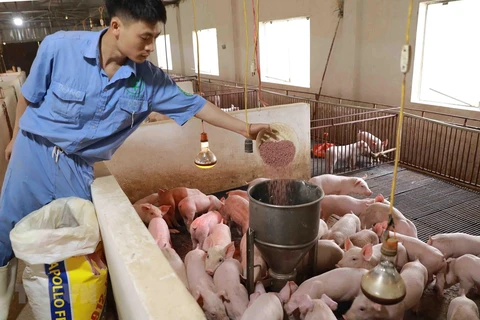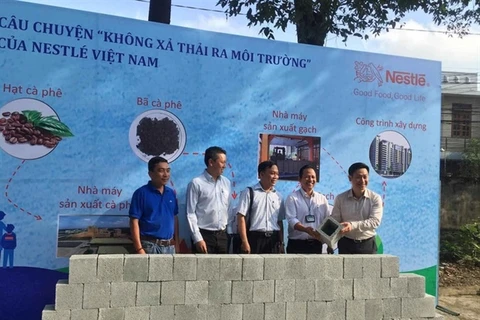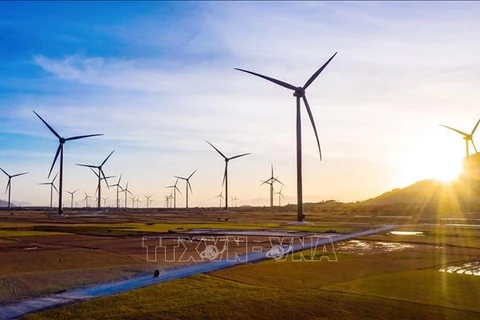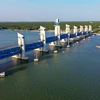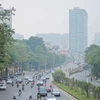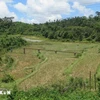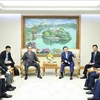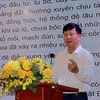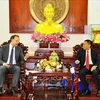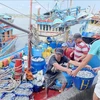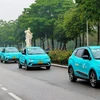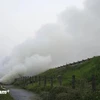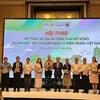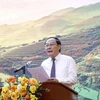
Hanoi (VNA) - Highlighting the current limitations in solid waste treatment where approximately 10% of hazardous waste remains uncollected and untreated, Deputy Director of the Institute of Strategy and Policy on Natural Resources and Environment Mai Thanh Dung said the Ministry is preparing a national action plan on the circular economy for submission to the Prime Minister. Once approved, this plan will be implemented nationwide.
Speaking at a workshop entitled, “Solid Waste Management Towards a Circular Economy in Vietnam: Policies and Enforcement,” organised by the institute on July 12 in Quang Ninh Province, Dung referred to the institute’s statistics showing that in 2022, urban areas generated approximately 26,100 tonnes of solid waste per day. Rural areas produced about 22,400 tonnes per day.
Research by the institute also indicates that in urban areas, nearly 5-10% of domestic solid waste remains uncollected, while in rural areas, the figure is about 30-45%. Notably, about 10% of daily hazardous waste is still not collected or treated.
Given this fact, Vietnam has identified effective solid waste management as one of the top priorities to address environmental pollution towards sustainable development goals. The government has set a target of increasing the collection and treatment rate of domestic solid waste to 95% in urban areas, 90% in rural areas, and 98% for hazardous waste by 2030.
“Circular economic development is an initiative widely supported by the international community. It is seen as a key approach to harmonizing economic growth with environmental protection and advancing towards green economy and sustainable development,” Dung said.
He explained that the circular economy is a closed production cycle, where waste is returned and repurposed as raw materials, thereby minimizing negative impacts on the environment, ecosystems, and human health.
Doan Duy Vinh, head of the Quang Ninh Department of Environmental Protection, noted that the northeastern province of Quang Ninh is home to several notable sites, including the Yen Tu scenic area - central to Vietnamese Buddhism, and the world natural heritage site of Ha Long Bay. Additionally, Quang Ninh serves as a key logistics hub with multiple border gates, a well-developed seaport system, and advantageous trading opportunities with other countries.
With these advantages, Quang Ninh has prioritized building favorable mechanisms and policies to promote socialization and attract investment from the private and foreign sectors in waste collection, classification, recycling, reuse, and waste treatment.
At the workshop, representatives from domestic and international organizations shared solutions in solid waste management, including material recovery from recyclables, waste incineration for electricity generation, solid waste management in Ha Long Bay, and the application of non-energy carbonization models for resource recovery.
Le Anh Vu, a representative of the Hanns Seidel Foundation Vietnam, emphasized that effective solid waste management is crucial for transitioning to a circular economy.
“Rather than merely destroying and treating waste, circular methods should be applied,” Vu said. He highlighted that solutions such as reducing, reusing, and recycling waste are effective strategies to minimize the amount of waste in landfills. These approaches not only save valuable resources but also reduce environmental pollution risks.
As part of the workshop, participants visited several models including the solid waste classification and floating waste collection system in Ha Long Bay. The also viewed initiatives to reduce single-use plastics, the Garbage Bank model where waste can be exchanged for money, and the co-processing solution for solid waste in cement clinker kilns implemented by Quang Ninh Cement and Construction Joint Stock Company./.
